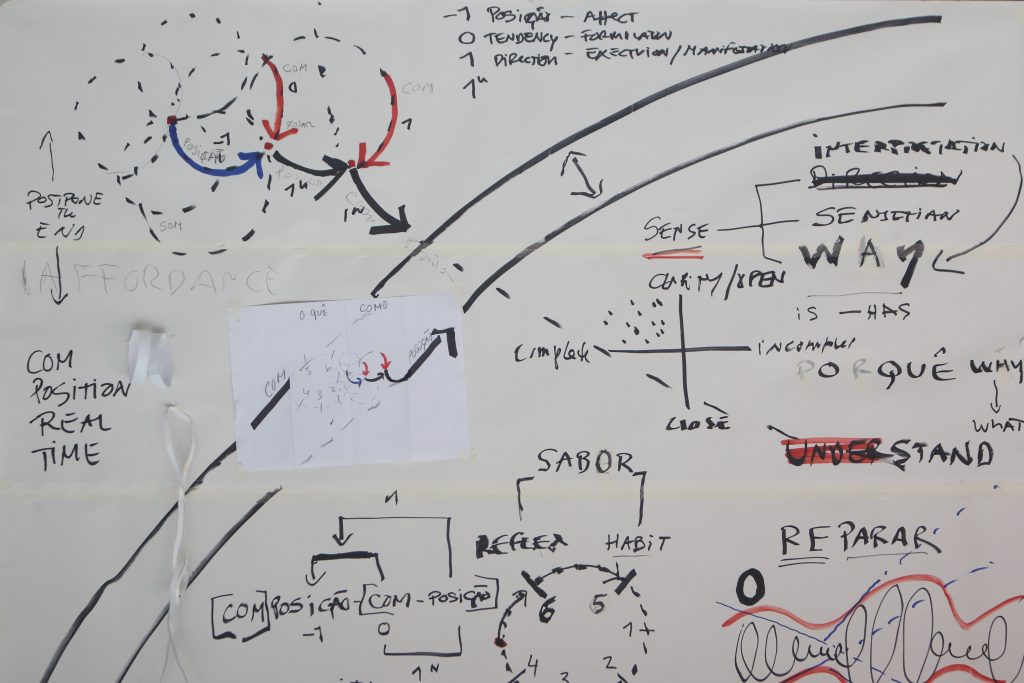introduction, modus operandi and background

Meeting a friend in a corridor, Wittgenstein said: “Tell me, why do people always say it was natural for men to assume that the sun went round the earth, rather than that the earth was rotating?”
His friend said: “Well, obviously, because it looks as if the sun is going round the earth.”
To which the philosopher replied: “What would it have looked like if it had looked as if the earth was rotating?”
(Jumpers, by Tom Stoppard, Grove Press (1972) p. 75)
Seeing for the first time
Most of the things we do take place without us becoming aware of them. And it couldn’t be any other way. We would not be able to process all the data we deal with and it would be impossible to manage the different accidents and incidents that are continuously happening to us if we were aware of every little thing that surrounds to us (both outside and inside our body). Habits, routines and patters take over us and, till a certain extend, that’s inevitably and necessary.
The problem is when we start taking things for granted. We stop being amazed, we stop discovering and, unsurprisingly, we stop being creative. The more comfortable and settled our environment is, the less effort we do in order to see the world again. This ability of seeing things for the first time (even the ones we think we have already seen) is a key tool not to fall into the trap of an existence that is reduced to confirmation of what has already been confirmed.
Art, if for anything useful, is exactly for that: to help us to see the world again. To see what is already there but is hidden behind the noise generated by what we take for granted, our own pre- conceptions and the manipulated images we project of the world and of ourselves. The difficulty is that “seeing things for the first time” is a practical impossibility – once an image becomes imprinted in our imaginary, its very hard to erase or extract it.
In order to divert from this obstacle, Real Time Composition trains a contra-intuitive skill: the ability to look at ourselves looking at (ourselves looking at) things. It does that by activating the famous Bartleby’s quality: “I would prefer not to…”. This attribute keeps, according to Giorgio Agamben, “possibility suspended between occurrence and non-occurrence, between the capacity to be and the capacity not to be.” (“Bartleby, or On Contingency” in Potentialities: Collected Essays in Philosophy, Stanford University Press, California,1999)
This in-betweenness is the “playground” of the Real Time Composition practice.
Standing versus Understanding
“João Fiadeiro works exactly with the matter of the ‘in-between’ and his Real Time Composition method (…) is based upon the challenge to produce – by cultivating molecular clarity – a re-assessment of what freedom in improvisation might be, as well as of what the creativity of the artist might be. (…), Fiadeiro has, so to say, woven a whole philosophy of the event applied to dance. His method, encompassed by the dense-light delicacy of simple things, does not deal with anything other than life; it is just a clarification of vital functioning, of the operative dynamics of human relations, of cohabitation.”
These are words from Fernanda Eugénio – a Brazilian anthropologist that moved to Lisbon in 2011 to engaged in a post-doctorate on the relation between the Real Time Composition and the Philosophy of the Event. Our involvement within her post-doc led us to an intense collaboration under the frame of the project AND_Lab where between 2011 and 2014 – together with the performers Carolina Campos and Daniel Pizamiglio – João Fiadeiro was finally able to formulate, in a more accurate, precise and simple way what his research on Real Time Composition is about: that the role of the performer (both in a composition or an improvisation) is not about understanding but about standing. He realized that his central research topic was to state this very simple (but contra-intuitive) principle: that there is nothing “under” the “stand”. The only task of the Real Time practitioner: position them selves (take a stand) instead of trying to create a composition (trying to under-stand). And for that, one needs to substitute the idea of com-position with the idea of position-com. In Portuguese, the preposition “com” means “with” and taking a position-with instead of composing is the performer’s main challenge in this practice.
This modus operandi will eventually give place to a set of relations between positions (position-with-position-with-position-with- position…) which is how an emergent system can be generated within humans: “by replacing manipulation with handling, expectation with waiting, certainty with trust, complaint with commitment, accusation with participation, rigidity with rigor, avoidance with attendance, efficacy with sufficiency, conditioning with condition, power with force, abuse with use and discarding with repairing” (The Encounter is a Wound (F. Eugénio and J. Fiadeiro, Ghost Editions, Lisbon, 2012). In one sentence: by becoming a consequence and not a cause.
That’s the only way the other (a collaborator, the spectator, the other- in-you, etc.) will be able to perceive (and receive) ones contribution not as an opposition or an imposition but as an “open position”, creating the appropriated conditions for a relation based on reciprocity to emerge.